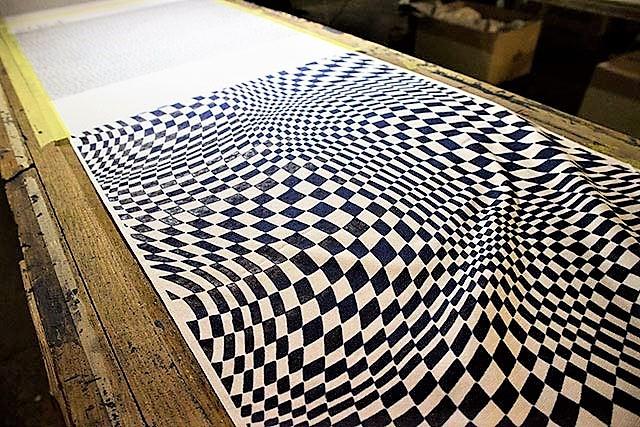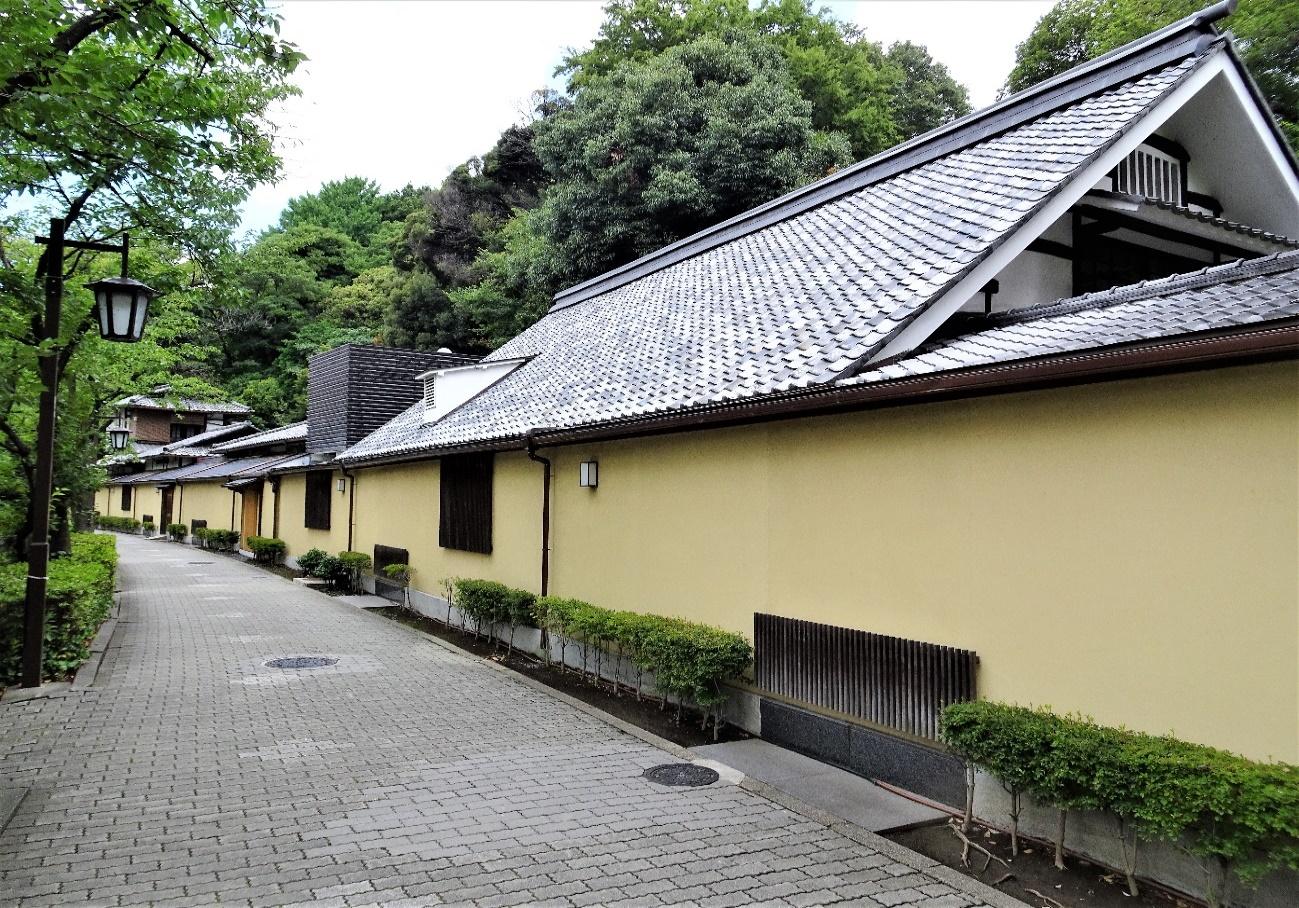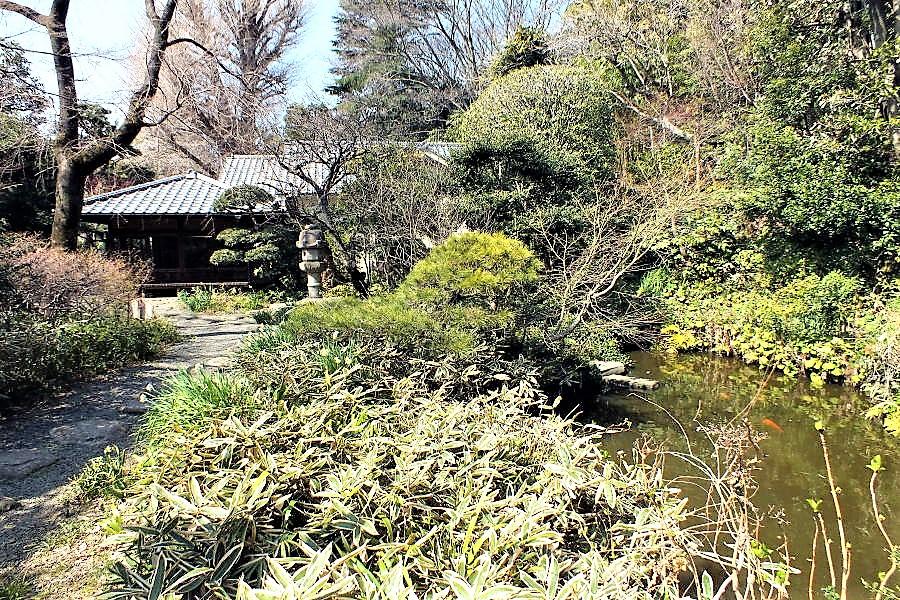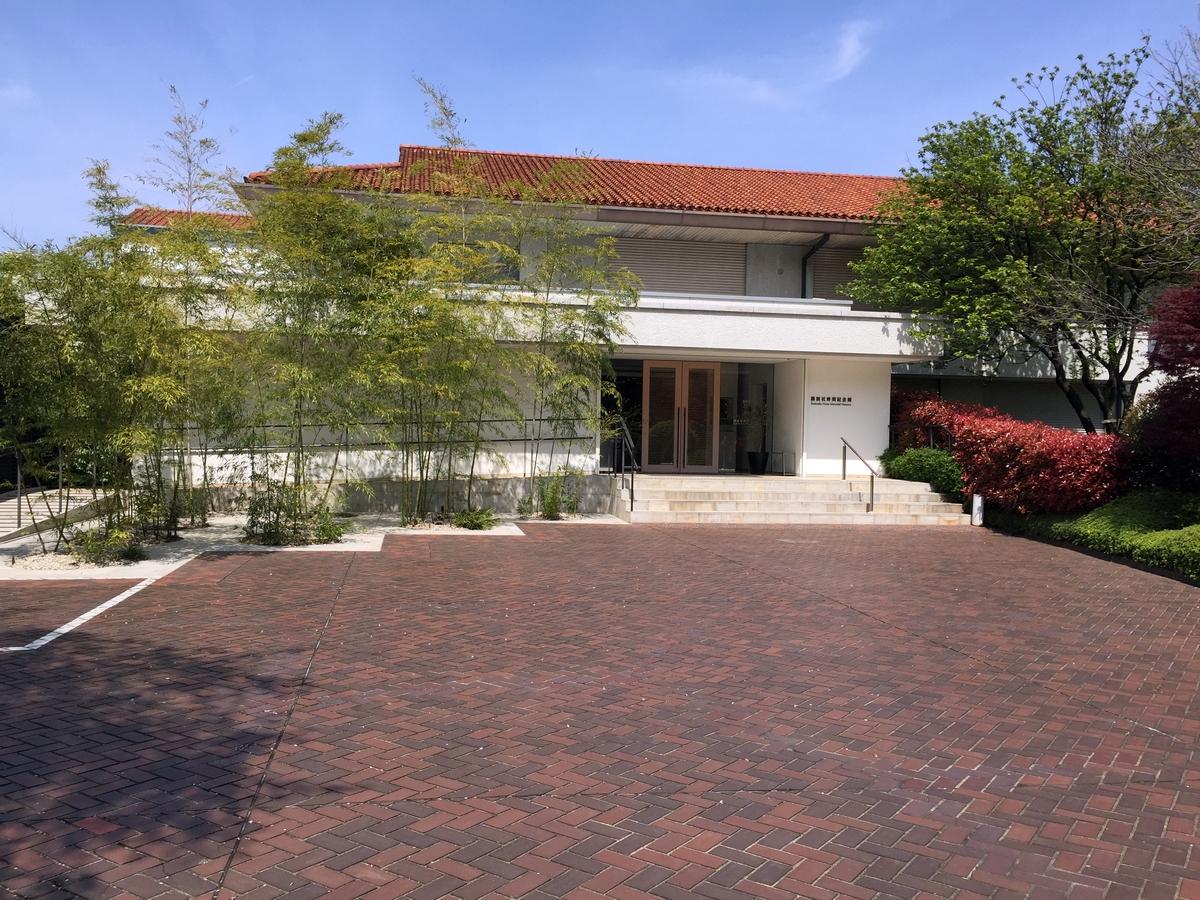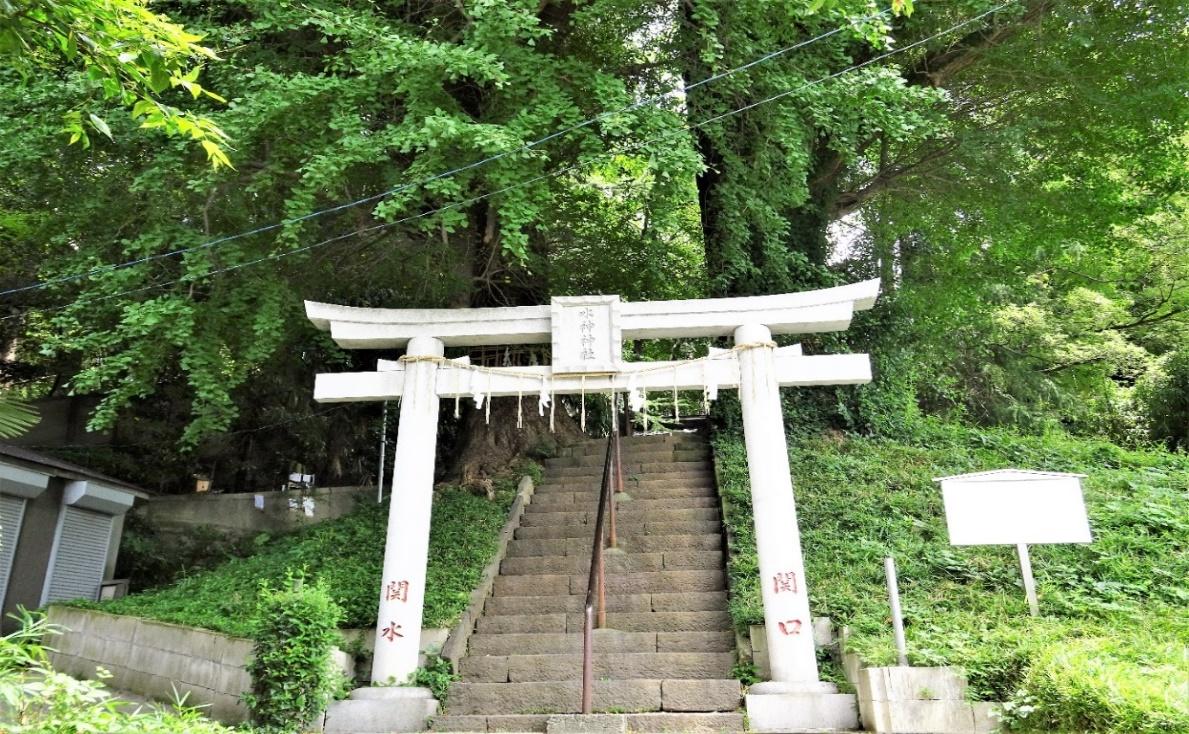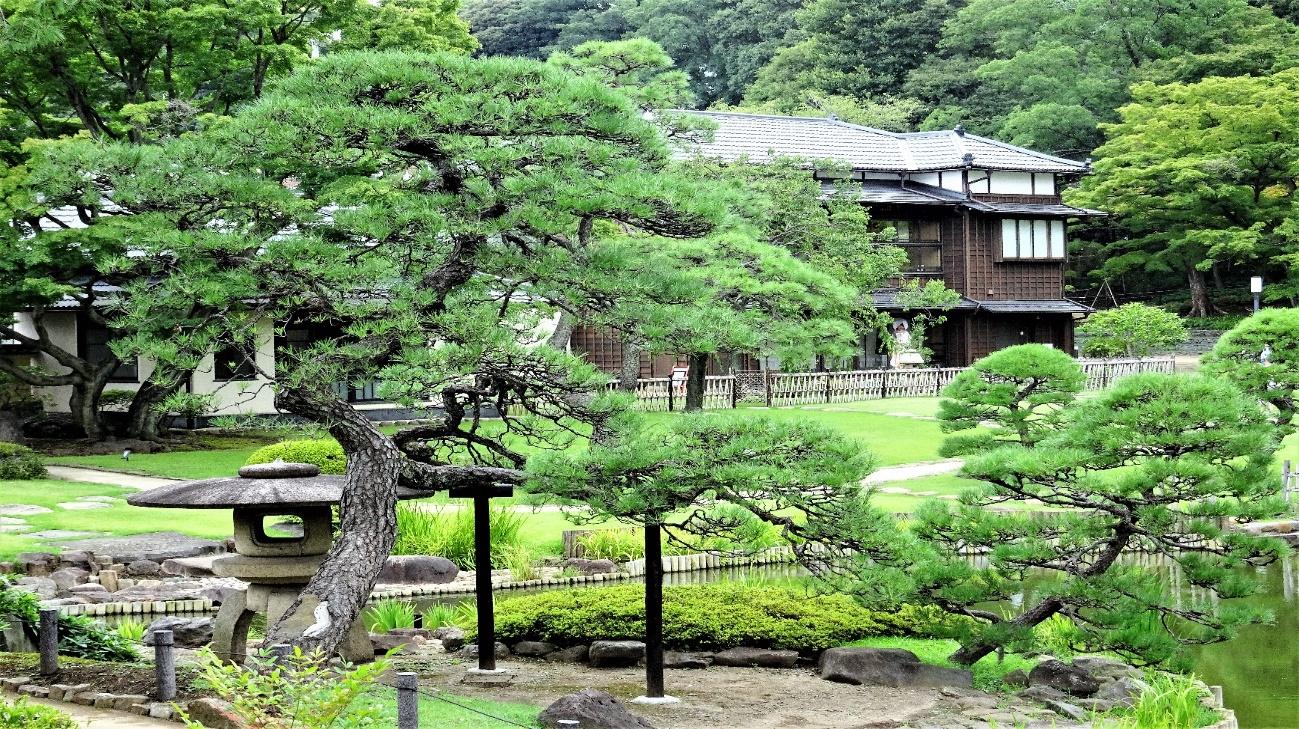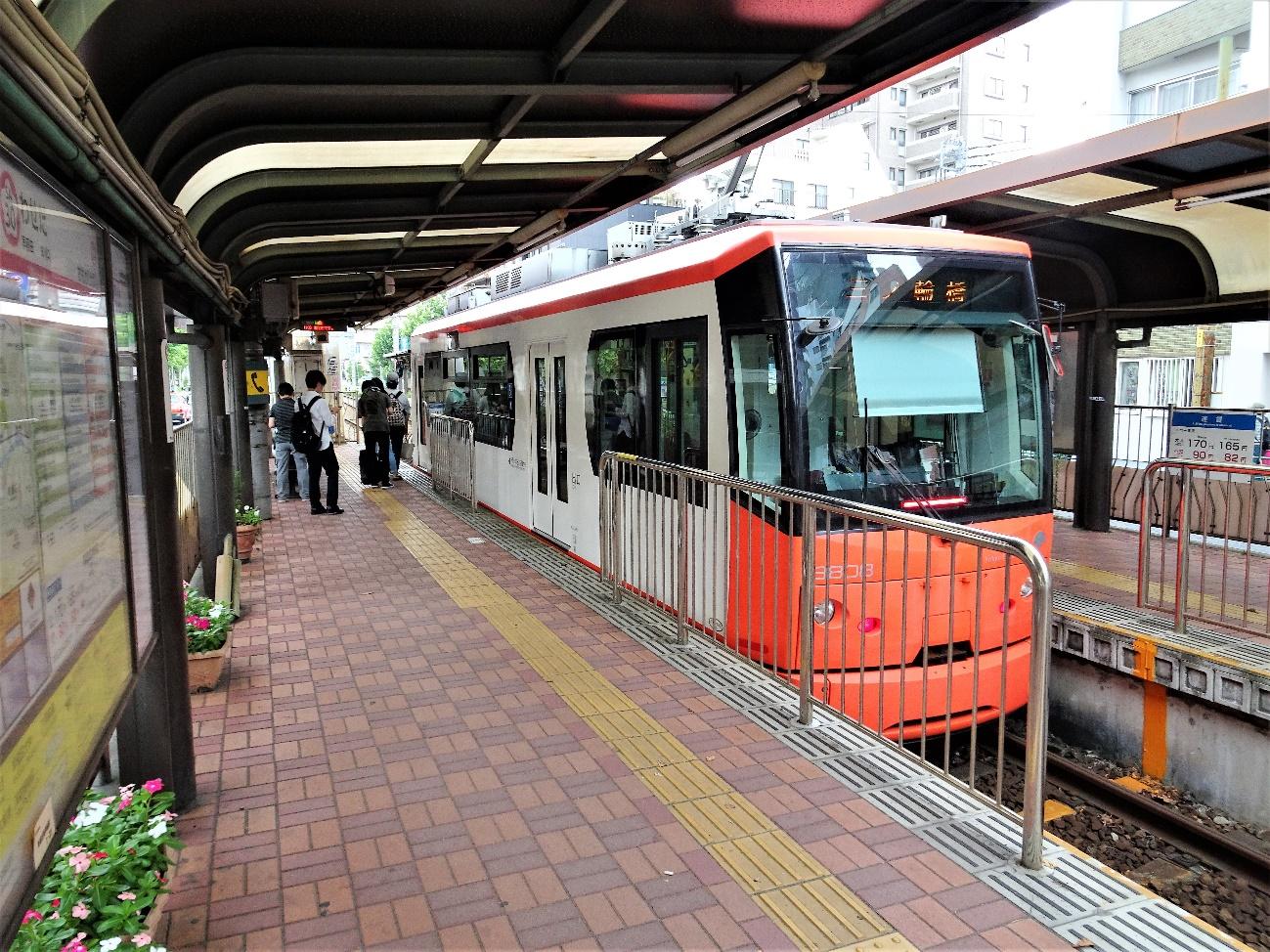Ohji Otonashi-Shinsui Park.
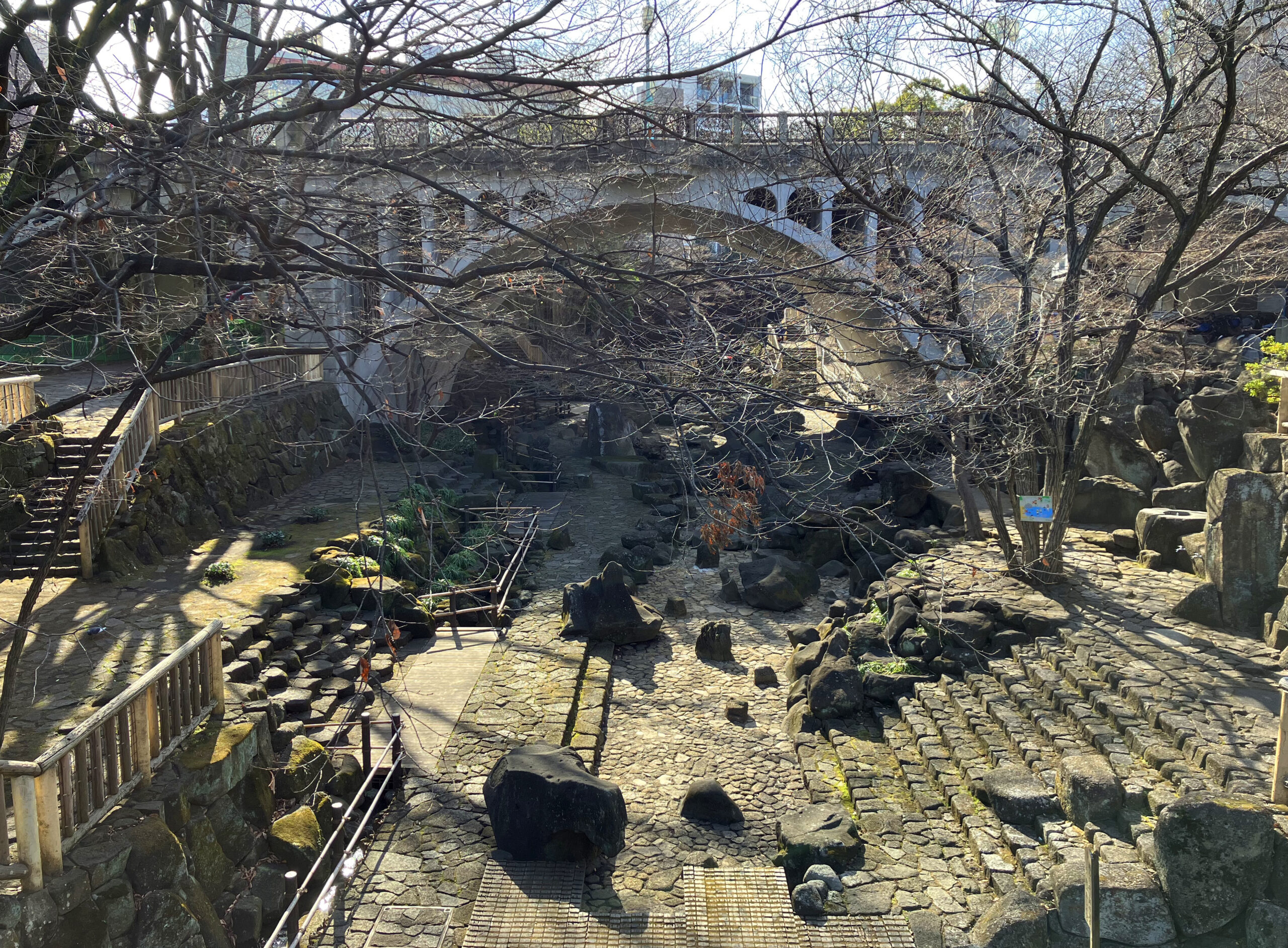
Getting off the tramcar at the Obji-Ekimae Station, we can find out a slant of Meiji street on the right side of Asukayama hill. Going up the slant for about 150M, we can reach an approach to Otonashi bridge on the right side of the slant. Ohji Otonashi-Shinsui Park is extended in the valley under the bridge. This park was created using the method of landscape gardening by utilizing the ruins of flow channel which were left after changing the water passage of Syakujii-River. It is composed of a long depression in the ground surface and of avenues on the banks at the both sides of the ruined river. The depression reminds us of the former water flow of the river. It is surrounded by stone walls which are evenly piled up to several meters in height.The water flows through various shapes of natural rocks being arranged along the channel, in harmony with greenery of trees which is hanging over the stream from both sides of the banks.A cascade and a waterwheel have been provided in the path of stream which creates a natural scenic beauty.In the spring, cherry trees yield pink blossom along avenues. In the summer, the foliage of trees creates nice shade against strong sunlight inside the torrent. Many people come together for cool breeze at the riverside. Kids dabble in the stream. Letting us in cool air refreshes our mind and body. The avenues are ablaze with splendid gold tint of leaves of trees in autumn.Ohji Otonashi-Shinsui Park is really a nice place for taking rest.
Paper Museum.

There is a small hill on the left side of the Ohji-Ekimae Station. It is called Asuka-Yama Park. The paper museum is located at the center of the park. You can climb the slant of the hill by utilizing a monorail carriage named “Escargot” which has a shortest travel in the world.

The paper museum was founded in Ohji area in 1950 with the aim of collecting and displaying the objects pertaining to paper making and its development. Ohji is said to be the birthplace of manufacturing of western style paper in Japan. The Shosi Kaisya Co. Ltd (Current Ohji Paper Co., Ltd) was established in 1872 in Ohji area and started the mass production of western style paper through automating processes such as forming, pressing, drying and calendaring (give gloss & smoothing) firstly in Japan.
The museum has collection of more than 40,000 historical data and around 10,000 books relating to paper making. They exhibit traditional Japanese paper called “Washi”, various kinds of western style paper, recycle paper and current ecological paper.
Entrance Hall
A portrait of prince Shotoku hangs on the wall. He is said to promote a papermaking in order to spread Buddhist scriptures across the country in Asuka Period (593 to 710). He is even now worshipped as an originator of papermaking in Japan by the production areas
1st Gallery on 2nd floor
Materials, manufacturing process, product and machine in modern paper industry.
2nd Gallery on 3rd floor
Learning paper structure, mechanism and recycling. We can perceive the texture of various paper by touch.
3rd Gallery on 4th floor
History of papermaking over the world.
Outdoor Garden
Material for Washi paper.
Trees such as Kozo (paper mulberry), Mitsumata (paper birch) and Ganpi (clove-like bush) are being planted in the garden. Washi Japanese paper is made from the fiber of these trees.
Souvenir Shop on ground floor.
Papermaking kit, post cards, Japanese leather paper and etc. are being sold.
The paper museum periodically holds various events. Visitors can experience an ecological papermaking by utilizing a used milk carton on every Saturday.
Recently an edible paper is made from familiar vegetables. In near future red, green, orange colored food papers will be displayed and sold in the supermarket.Holliday of this museum is every Monday.
Kishibo-Jin (Guardian Deity of Children)

There is a temple named Homyo-Ji temple near Kishibo-Jin-Mae station on the Arakawa-Line.Getting off the station, we can find an alley ahead on the right side of the station with respect to the tramcar travelling direction. Heading along the alley for about 250M, Homyo-Ji temple appears on the left side.They worship a guardian deity of children called Kishibo-Jin in the main building with the typical architectural style called “Gongen-Tsukuri” in Edo period, which is consisting of a prayer’s hall, a votive offering (fulfilment of a vow) hall and a main hall.The main hall was constructed in 1664 and then the offering hall in 1700 respectively, owing to the donation made by a daughter of 4th Shogun Ietsuna Tokugawa. They still remain a remnant of the temple architectural style in Edo period, even though they were renovated in large-scale in 1979. They are designated as an important cultural asset by Japanese government.

Kishibo-Jin is said to be originated in a fierce deity named Hariti (Panica’s Wife) in Hinduism. Folklore says that she gave birth to 1,000 babies and she kidnapped human children to feed her babies.Once Buddha heard her evil deeds and he hid one of her baby to correct her conduct. She frantically looked for the baby all over the world but she couldn’t find it out. Being greatly embarrassed, she came to Buddha and solicit her help.Buddha said to her “You become mad even only one baby is missing out of 1000”. And he admonished her“Think it over how deep the parents’ sorrow is when they lose their child”.She was convinced of her ill deeds and she reformed herself. Since then she believed in Buddha’s teaching. She became a guardian deity of children.A religious belief in Kishibo-Jin is originated in Heian Period (794-1192) in Japan. Since then she has been worshipped as a deity who bless people with easy delivery and child rearing.In addition to Kishibo-Jin in Homyo-Ji Temple, she is also enshrined in Shingenji temple in Iriya and in Enjyu-In temple in Ichikawa city.People call them three major Kishibo-Jin in Edo period.A stall in the Homyo-Ji temple ground is selling a familiar local souvenir called “Susuki-Mimizuku” for visitors. It is a lovely doll of an eared owl, being made from dried fleecy spikes of Japanese silver grass.

There is an amusing folktale about the owl doll around this area. Once upon a time here lived a daughter of poor family whose mother was afflicted with a disease for long time. She continued visiting the Kishibo-jin to pray for her mother’s recovery 100 times since she can not afford to buy medicine for her mother. One day Kishibo-Jin appeared in her dream and told her to make the owl doll by utilizing silver grass grown around this area and to sell it. She followed the divine message and make the dolls. Those dolls were selling like wildfire. As a result she happily bought medicine for her mother.
Tomita Some Kogei
Stepping off the Arakawa line at Omokage-Bashi station, we can find a tiny bridge called “Omokage-Bashi” over Kanda River near the station. Crossing the bridge and then following a bank on the left side of the river to the downstream for about 100M, a two-story building appears in a grove on the left side.

It is a long-established dye workshop named “Tomita-Some Kogei Co., Ltd” which has been operating for 6 generations since 1914. They have a showroom inside the building. They named it “Tokyo-Orimonogatari-Museum” (Tokyo dyed fabrics story museum).They are printing a Japanese traditional design called “EDO-KOMON” onto fabrics in the method of stencil dyeing. The dyed fabrics are used for garment of Kimono, small fabric articles, small silk wrapping cloth called Fukusa (used in tea ceremony) and etc.“The Komon” refers to the repetition of fine geometrical patterns which are systematically arranged at regular intervals. They are usually dyed with a single color. In the finest case, the patterns are so elaborately arranged that around 1000 dots are printed within a 3 CM2 square on a fabric.The fabric looks unfigured, looking at it from a distance. Observing close, the fine patterns show up on the fabric. It brings out subdued and rich feeling.The method of the printing performed by Tomita Kogei, is called “Kata-Some” in Japanese so called stencil dyeing. Roughly speaking it takes following processes.At first place a screen of a paper stencil over a fabric and apply a resist paste through the stencil onto the fabric with wooden spatula. Along the fabric of 13M length, the stencil screen is shifted aside without steps and positioned precisely every pasting operation. This can be performed only by the qualified craftsman who has acquired the special dyeing technic through his long experience.After drying the fabric, dye the whole fabric with brush. Drying again, wash away the resist paste. White patters being left after washing away the paste, are sharply silhouetted in contrast with colored background on the fabric. It is something like a black-and-white photographic print.

The pattern of “Komon” is originated in Muromachi Period (1388-1573). In Edo Period (1603-1868), the patterns were dyed on the fabric used for a ceremonial dress worn by the Samurai. The dress is called “Kamisimo” that is the formal combination of sleeveless jacket(kataginu) and trousers (Hakama). The pattern was called “Edo Komon”.
The three privileged branched families in the Tokugawa Shogunate designated their own designed “Komon” patterns and family crests to be dyed on their garment.Other major feudal lords followed the same manner. Their “Komon” patterns were clarifying their social status and showing their dignity. The patterns used by one of Tokugawa family was called “Gokusame” which has extremely fine patterns like a shark scaly skin. The “Edo Komon” is basically decent and clean design.It lets us feel a fashionable sense of Samurai in their austere lifestyle.As popular culture flourished in Edo city from the Mid-Edo Period,the “Komon” patterns became popular design among townspeople for garment such as Kimono and Haori (a half coat). They preferred the Komon patterns with witty and auspicious motif which shows their playful mind.

The Design of “Edo-Komon” has been changing in response to the preference of people with the times. Nowadays young craftsmen are releasing a new and daring design of “Komon-pattern” without being seized with a tradition. Tomita-Kogei has recently established colorful and showy brand named “SARAKICHI”. Their newly designed Komon patterns are named “Tokyo-Komon” and dyed on the fabrics of Kimono, Necktie, Scarf, shawl, handkerchief and so on.
They have recently printed a checkered pattern called “Ichimatsu Moyo” in Japanese on silk scarf in the method of stencil dyeing. The pattern is an authentic emblem of Tokyo 2020 Olympic Game. You can experience a dyeing operation in their workshop from Monday to Friday on charged base if making an application in advance. They are open to visitors for inspecting their workshop free of charge during aforesaid period.
Munatsuki-Saka Slant

Getting on the Arakawa-Line from Omokagebashi Station and step off at next Waseda Station, you will face Shin-Mejiro Street. Going ahead along the street towards Edobashi for about 300M, Rihga Royal Hotel come out on the right side of the street. There is an alley just in front of the hotel on left side of the street. Entering the alley and crossing a tiny bridge named Komatsuka-Bashi over Kanda River, we can view a steep slant climbing up a slope of Mejiro-Dai hill being covered with greenery.
It is called “Munatsuki-Saka” slant which runs up the hill for about 300M and then leads to Mejiro Street.
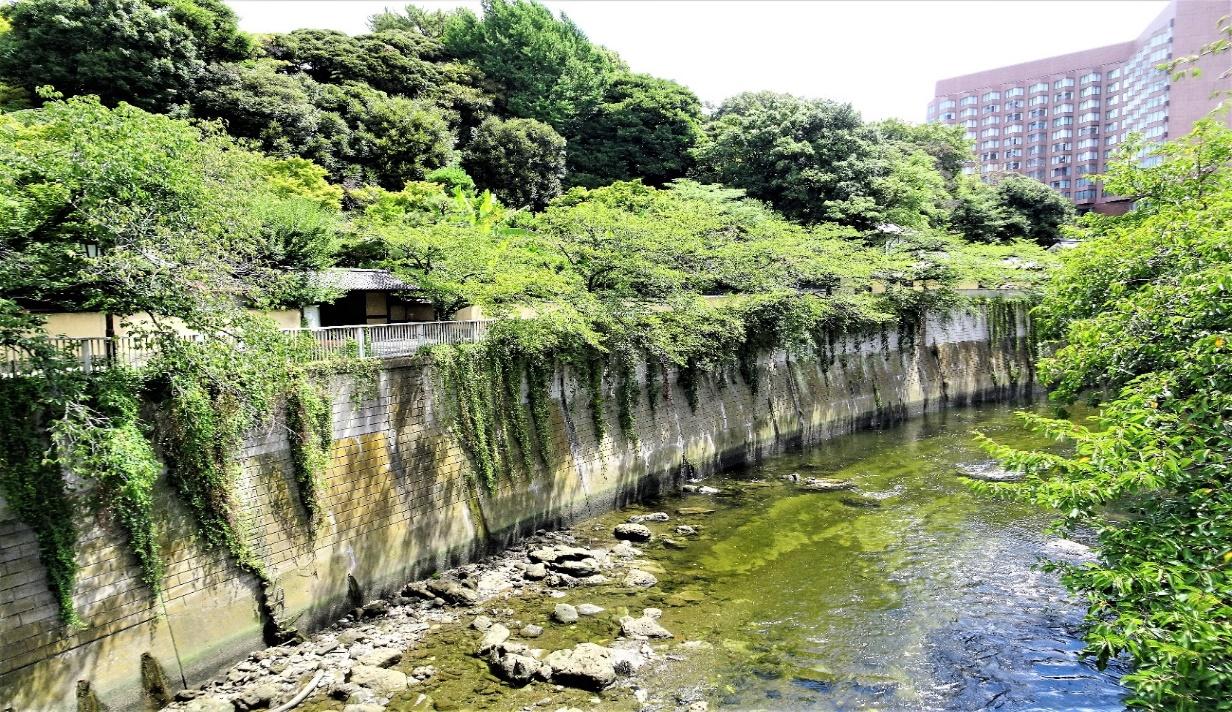
There are a wedding hall named “Chinzan-So”, a memorial house of Haiku-poet named “Basho-An” and the Noma memorial art museum (the founder of Kodansha publishing company) on the right side of the Munatsuki-Saka Slant in order from the foot of the hill. Meanwhile the Mizu shrine, Higo-Hosokawa garden, the memorial museum of Hosokawa family named “Eisei-Bunko” and a student’s dormitory named “Wakei-Jyuku”, are located in same order on the left side of the slant.
“Chinzan-So”
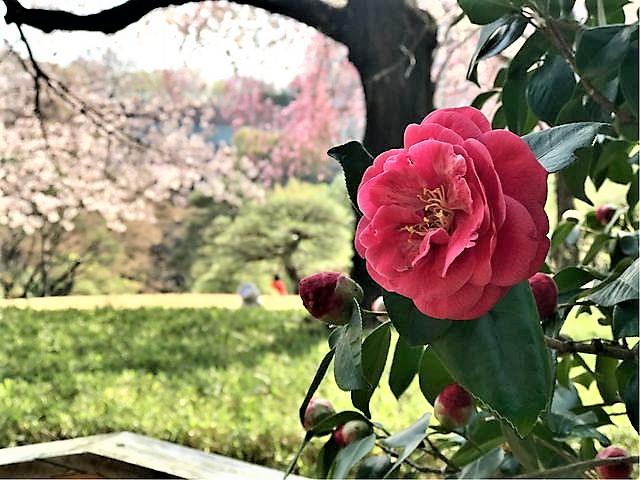
The area around Chinzan-So was once called “Tsubaki-Yama“ which means a hill being covered with wild camellia. There used to be a residence of Feudal lord named Kuroda in Kururi domain in Edo Period (a local region near Kimitsu city in Chiba prefecture). In the early Meiji period, Field Marshal Aritomo Yamagata purchased the site from them and built his resident there. He named it “Villa on Camellia-Hill (Chinzan-So). In 1918(Taisho Period), the site was sold to the Fujita Concern having strong political contacts. After World War II, they established a wedding hall of Chinzan-So and subsequently opened hotel Four Seasons in1992 in the site. Their Japanese style garden is open to the public from 9:00 to 22:00 everyday.
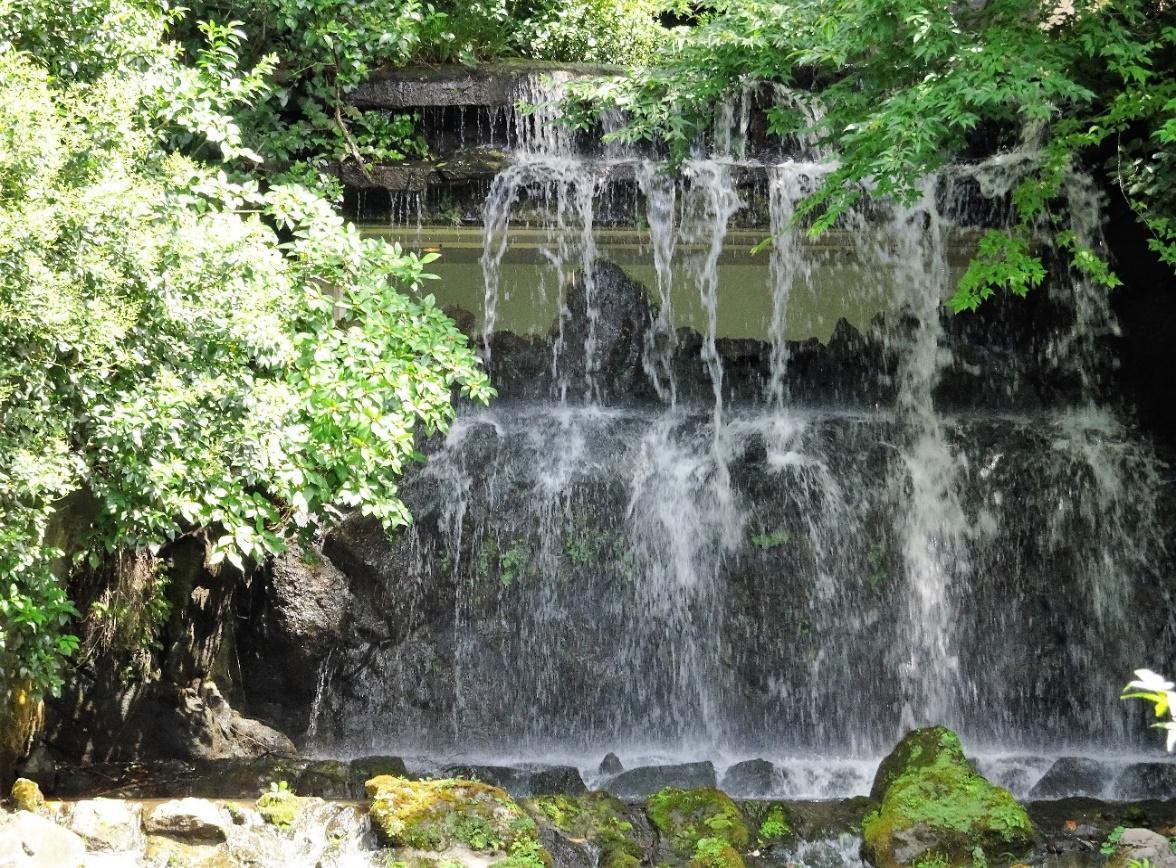
There is a pond at the center of garden in which various colored carps are swimming.Chinzan-So conducts wedding ceremonies of several couples a day.You might be able to see such a scene that the bride and groom are standing in Japanese traditional wears against a waterfall to have their memorial pictures taken.The promenades run around the pond and stretch over to hill side. Along the path there arranged three-story pagoda (designated as an important cultural asset), stone lanterns, wooden bridge, Arhat stone statues and etc. Through seasons we can enjoy flowers and hear the sound of waterfall and chirping song of birds in the tranquil environment. It really heals visitors.
There are restaurants built with the style of a tea-ceremony abor on the side of Kanda River in the garden. They serve you various style of Japanese cuisines such as Soba-noddle, grilled steak and traditional Japanese meal in courses called “Kaiseki-Ryori”.
Going up Munatsuki-Saka Slant at left side of the Chinzan-So, there is a memorial hall of Basho Matsuo who is a worldwide known Haiku poet. He used to live in this site for 3 years from 1677. He engaged in a repair work of Kanda River when he was badly off for money. In the site, there are the memorial hall, a tiny pond in the shape of a gourd, bamboo grove and stone monuments. Basho’s famous poem written in his own hand is inscribed on the stone monument. The poem says “The ancient pond, Frog plunged, breaking the silence.”The garden is modest and tasty. You can enter it free of charge.It is closed on Monday and Tuesday.
Noma memorial art museum of Kodansya.
It is located on the top of the hill facing Mejiro Street. The museum preserves and exhibits the artworks being collected by Seiji Noma, the founder of Kodansya publishing company.
They display Japanese and western paintings, sculptures, potteries, and the original covering pictures, frontispieces, illustrations and posters which were used for their publishing.Administration fee: 500 in Jp. Yen. Closed on Monday and Tuesday.
“Sui-Shrine”
In the meanwhile, there is a shrine called “Sui-Shrine” on the left side of the Munatsuki-Saka slant at the foot of the Mejiro-Dai Hill.Going up a stone stairway after passing through Tori-I-Gate, two old ginko trees stand side by side before our eyes. Each tree is wearing a straw rope with white paper cordons around its trunk. There is an old small sanctuary behind the trees. It worships a water guardian deity for the Kanda River
Higo Hosokawa Garden
Here used to be a suburban residence of Hosokawa family, a feudal lord of Higo area in Kumamoto in Edo Period. Currently the site is utilized for a public park under the control of Bunkyo ward administration office. We can enter the park free of charge.Going along Kanda River upstream for about 200M from Komatsuka bridge, there is the main gate of Higo Hosokawa Garden on the right side.This garden was created in the Japanese style with path around a central pond by utilizing rich spring water gushed from aquifer of Mejro-Dai Hill.
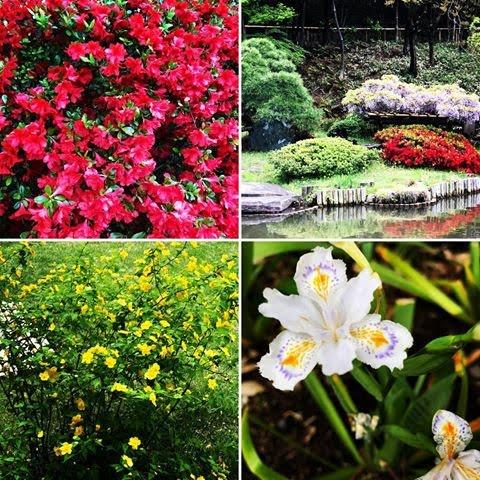
In this garden, we can enjoy various beautiful flowers which were yielded through special breeding by gardeners of the Hosokawa family in Higo Kumamoto during Edo period. They are specifically called “Hosokawa prominent 6 flowers” or “Higo Rokka” in Japanese. Those refer to camellia blooming from winter to early spring, sasanqua in early spring, iris and peony in spring, morning glory in summer and chrysanthemum in autumn.The breeding method of those flowers was preserved as the family’s treasure and never disclosed to others. In Higo Hosokawa Garden in Tokyo, we can view 4 of 6 flowers such as camellia, peony, iris and sasanqua.In addition, the garden shows us cherry blossoms in spring and stanning brocade with tinted maple leaves in autumn.
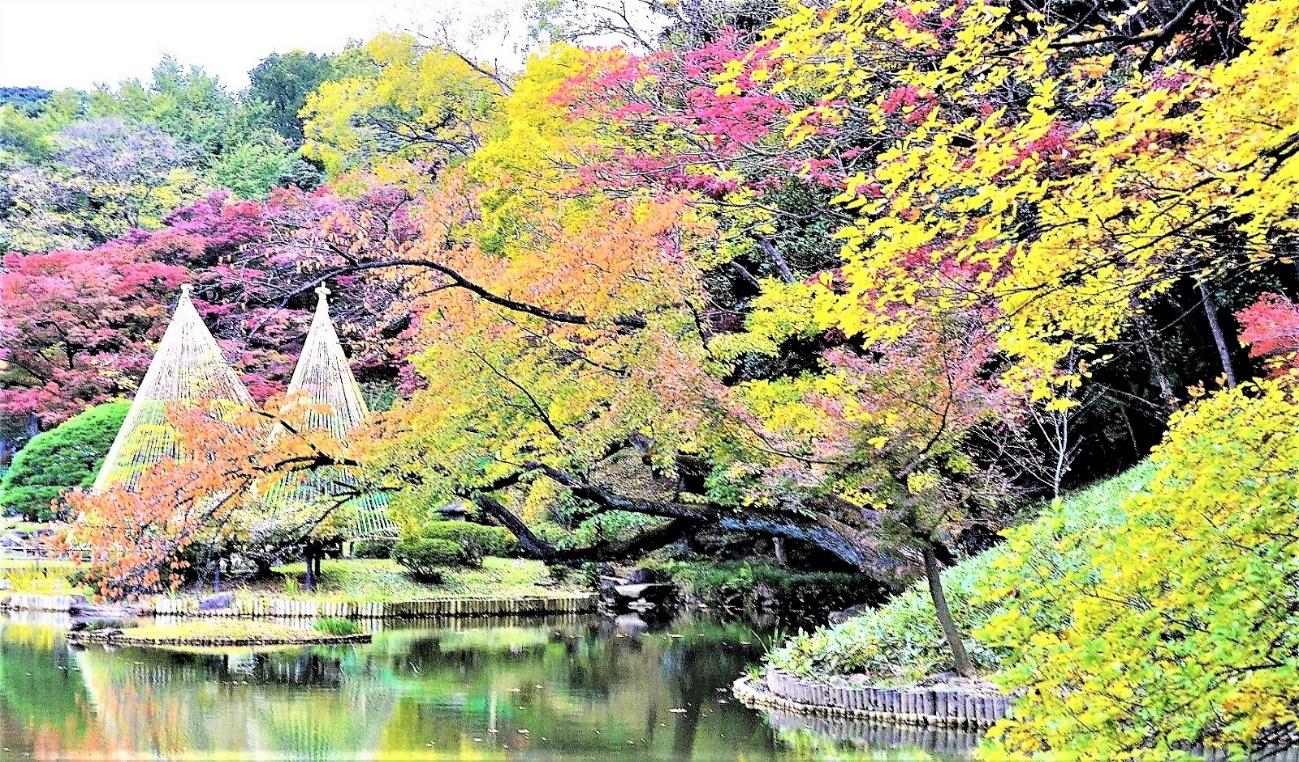
On the snowing day, the garden presents a different impressive scenery than usual. Pine trees around the pond are provided with straw ropes to protect the branches against snow fall, so called “Yukitsuri” in Japanese. The ropes stretch from the top of pine trees to the lower branches to prevent their damage from heavy snow. It looks like pine trees are opening umbrellas. And you might find out an unusual bird in the city, a kingfisher perching on a twig that is just about to plunge into the pond to catch a fish.And a historical two-story building is standing by the pond. It is named “Shouseikaku” which had been used as the place of study by Hosokawa Family. The four rooms on ground floor are currently used by applicants for meeting. One room called “Tsubaki” (Camelia) is open to the public for resting. We can taste Japanese green powder tea with sweet for 500 in Jp. Yen in the room.
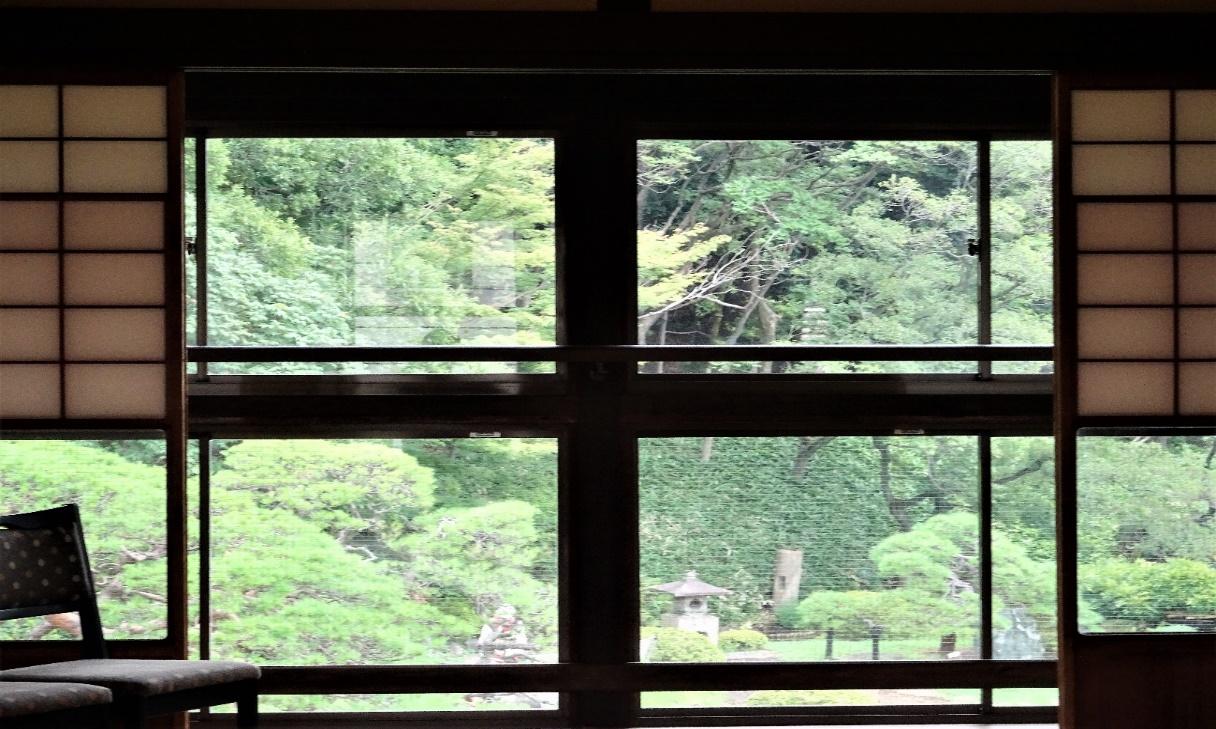
We can also go up to the second floor. There is a Japanese style room being laid with Tatami matt named “Sasanquza”. The room is provided with an alcove, paper sliding door and transom. It is surrounded all around by a corridor where you can look around whole view of the garden.All six rooms in the building are named after the flowers of “Higo Rokka”.
Eisei-Bunko Museum
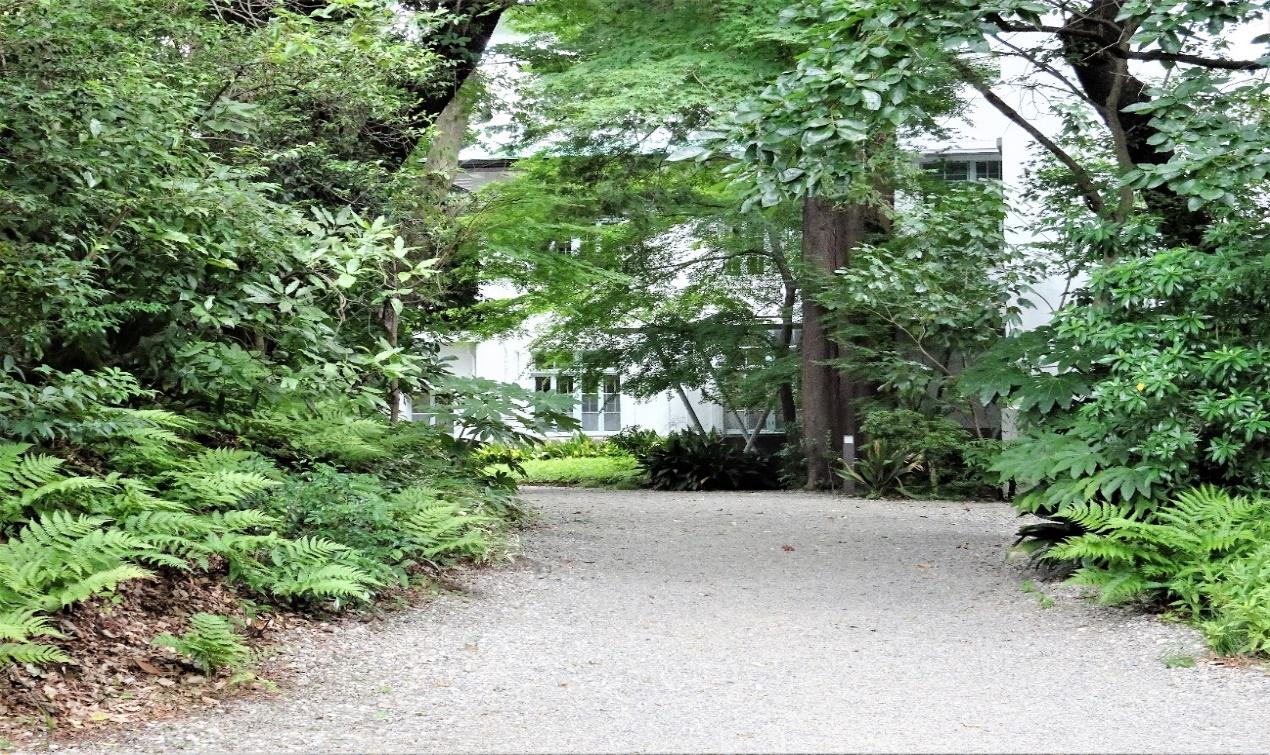
There is a short-cut path leading to the side gate of Eisei-Bunko museum in the north-east of the Higo Hosokawa Garden. Their main gate faces the Munatsuki-Saka Slant.The Eisei-Bunko Museum is preserving around 8,000 of cultural properties including 8 numbers of national treasures and 32 of important cultural assets. The historical literatures add up to 48,000 items. All these have been collected by successive generations of Hosokawa family for about 700 years since Kamakura Period.Those are covering a wide range of collection such as armor, a set of tea ceremony instruments, calligraphy, painting, sword, old manuscript and so on.
Administration fee is 1,000 in Jp. Yen per person. For your reference,they specially exhibit artworks which the heads of Hosokawa family and their daughters had used, from July 21 to Oct 3, 2018.
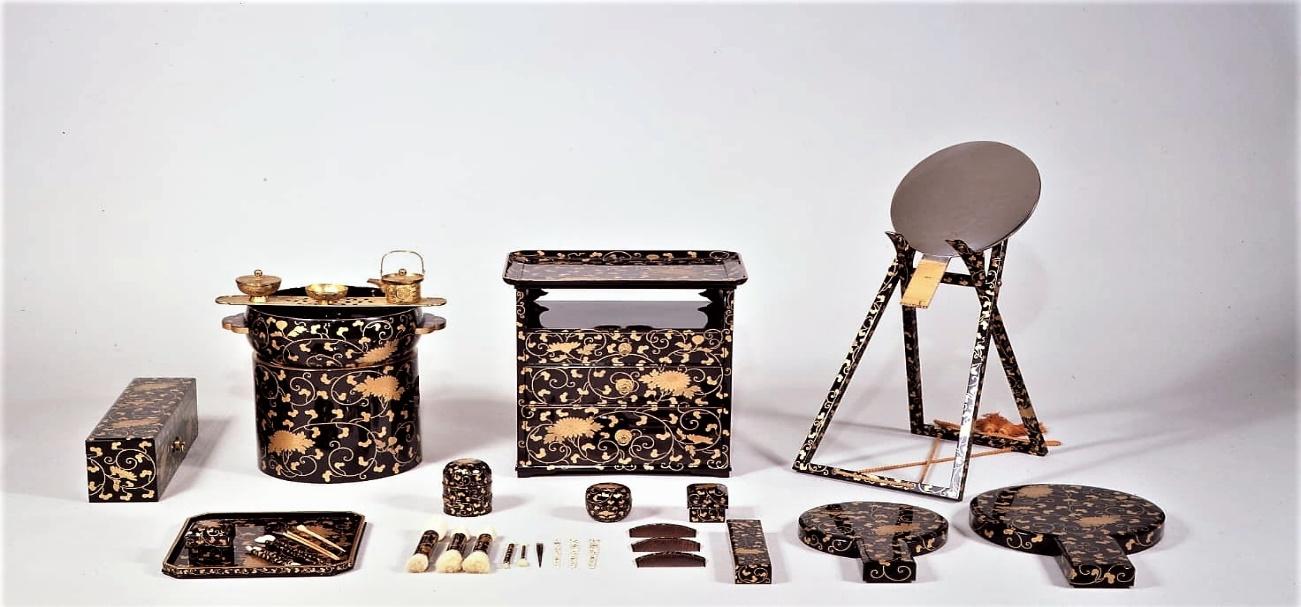
Most of their preservation are highly valued as cultural property historically and artistically.The annex building of the museum offers a resting corner where we can taste coffee while viewing greenery of grove through windows.
“Wakei-Jyuku”
Climbing up the Munatsuki-Saka Slant farther, there is the east gate of student’s dormitory called “Wakei-Jyuku” in greenery of a grove on the left side of the slant. The dormitory was established executively for male students of college and postgraduate school by Kisaku Maekawa, the founder of Maekawa MFG Co. Ltd. (Manufacturer of Industrial refrigeration compressor) 63 years ago.The site of around 5.7 acres is studded with six dormitory buildings where about 600 students are living. “Wakei-Jyuku” is aiming at formation of character for the students through the community life. Wakei-Jyuku said to be the model of the dormitory which is being described by Haruki Minakami in his novel titled with Norwegian wood.
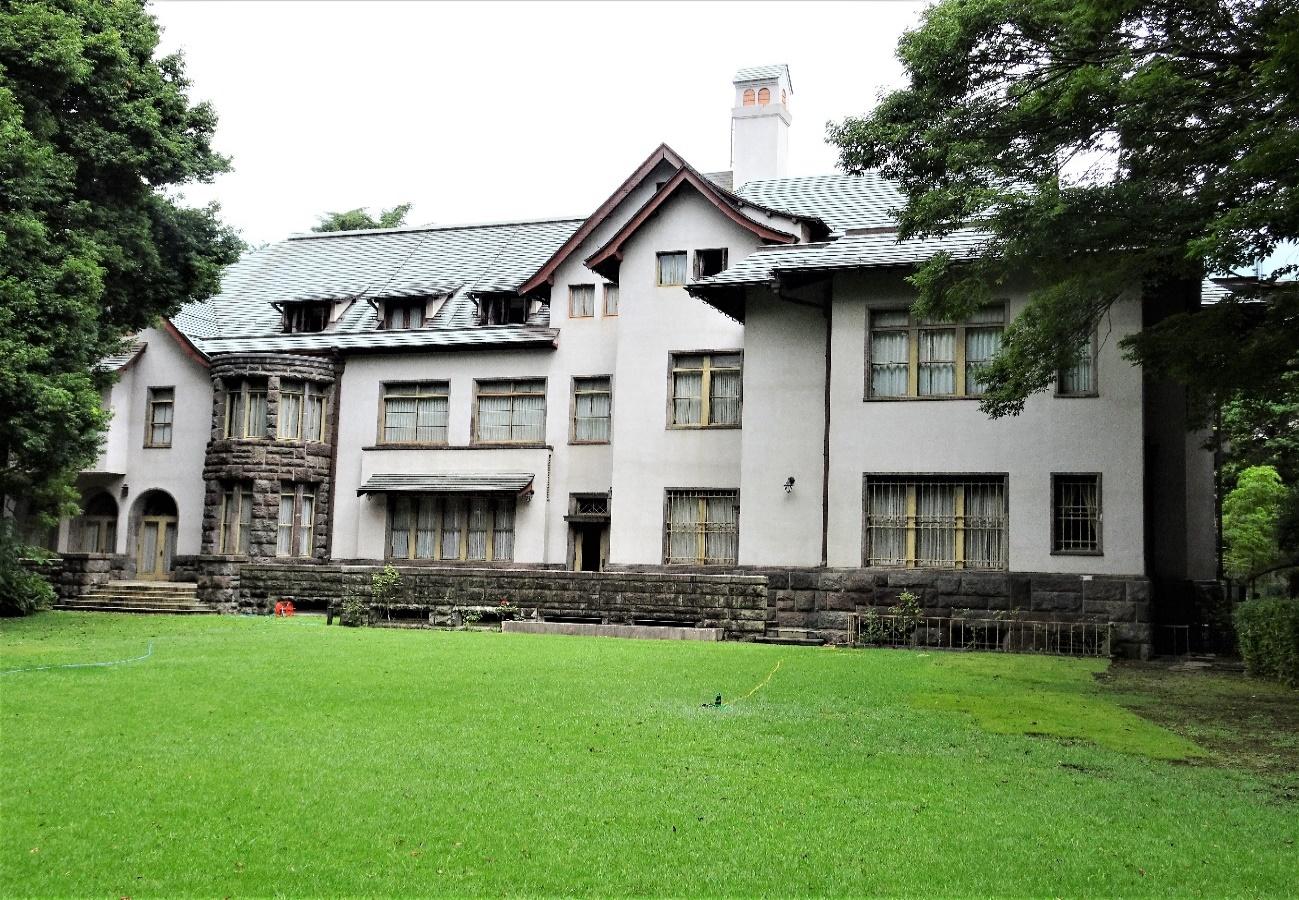
The building at the center of the site was built for the residence of marquis Hosokawa 82 years ago. We can view the external appearance of the building even though its inside is not open to the public. It was constructed for noble family in the style of Tudor architecture with English taste. The building has recently been used for wedding ceremony.
The Munatsuki-Saka slant is climbing in the shadowy grove on Mejiro-Dai Hill. It creates a serene and tranquil atmosphere even in the daytime. The historical valuable spots are lined up along the slant. Those tell us how the properties owned by feudal lords and purveyors to them were utilized in Japanese modernization after Meiji restoration and handed down to present day.












